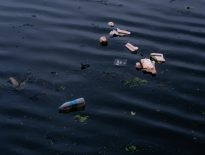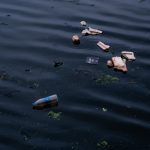The guide tucked his feet into his black boots and strapped his binoculars around his neck by the fenced nursery at Number 1. He took me across Fenella Drive to the Ramsar Site with the woman who had invited me to the Monavale Vlei to learn about wetland ecosystems and how they helped our wetland city get water. She left me in his educational company, and we walked the vlei.
“I can see you came prepared,” he mentioned observantly.
I was wearing safety shoes, as I usually do whenever I go for a site visit in similar environments. They were not going to be useful, nonetheless, if it was a rainy summer season rather than the end of a dry winter season. The ground would have puddles or it would be flooded in the rainy season.
Residential suburbs and maize gardens surrounded sixty-nine hectares of this open grassland wetland. Some of these fields and houses lie within the wetland. They were always flooded during rainy seasons, to the dismay of the residents.
We walked across a patch of burned grass near the road. It covered a small portion of the grassland. Some of the tufts of grass were turning a darker green.
“This is good for the vlei,” my guide said. The burning made the bare soil bed ideal for the germination of seeds. However, rather than being a result of human activity, the burning process had to occur naturally.
“I know one reason why people would burn a grassland that they don’t intend to cultivate,” I said.
It happened too often in the grassy hills of our high-density suburb further southeast of the vlei. People burned the grasslands to hunt for edible rodents, which we called mbeva. Ultimately, the burning of open grasslands by people, specifically, was a threat to the biodiversity that existed in the grasslands. I figured people tended to overdo it.
At various points away from the burnt patch of grass, there were invasive alien plant species. These plants do not occur naturally on the African continent. They were imported from other countries, such as Australia and England. There were purple verbena and typha, and there were reeds and water hyacinths in the stream. Such species did not belong in the vlei. Notable invasive plant species were the tall eucalyptus trees across the reed-filled stream that divided the grassland from a cultivated piece of land within the same wetland.
“These tall gum trees absorb between two hundred and one thousand liters of water per day,” the guide passionately said. They drained the ground with streams of water, and their roots went deep.
He mentioned a farm he had visited long ago to assess the water situation. The farm had a stream that was drying up. It had been a source of water for years. When his hosts were driving him to the farm, they showed him the direction in which the stream began.
“Immediately, I told them the reason why the stream was drying up.”
“How did you identify the cause of the drying stream?” I asked curiously.
He said that this species of Eucalyptus globulus trees had been planted around the spring.
As their experts told them, the farmers had to cut down all of these exotic trees that grew quickly and dig up their roots. The solution worked over time. The stream started flowing again as it used to, a long time ago. The planting of trees and other plants that did not belong in the open grasslands was another threat to the wetlands’ water-retention functions.
“But construction and cultivation are the major threats to wetland ecosystems now,” he said, pointing towards the cultivated land across the stream and to the residential homes beyond. Wild animals, like bullfrogs and warthogs, that used to live in the wetland escaped at night to grasslands on the edge of Harare City that were more open. This was because more human activities infringed on the vlei.
Read – The Abeokuta Women’s Protest – A Creative Non-Fiction by Joseph Ikhenoba, Nigeria
He pointed at the cracked ground we walked on. It seemed arid, yet it collected and retained rainwater. I found out that masses of different plants and grasses were designed to pull the water into the rich black soil. I learned that through this function, vleis of different kinds—from grassland to woodland vleis—created the beginnings of stream and river systems in many places around the world. Vleis maintained biodiversity, purified groundwater, managed floods, and reserved cultural values wherever they existed. Mother Earth knew how to look after herself and keep herself good and green.
“These vleis are the heart of our green areas,” my guide said as he handed me his binoculars. There were barn swallows in the vicinity. Some migrant birds came from as far as Europe—the European rollers and bee-eaters—to make this wetland their breeding ground. “Imagine if there were no wetlands,” he said, and stated how urban agriculture was leading to a loss of biodiversity and causing siltation and pollution through fertilizers and chemicals. Due to increased summer rainfall runoff and the lowering of the water table, which were both amplified by borehole drilling, building on wetlands was causing water shortages.
“I didn’t know about these negative impacts we are imposing on the environment,” I admitted. “I assigned the causes of these vices mainly to climate change!”
We later agreed that the damage we did to our lands was, in a bigger way, a problem today. The guide delved into the idea that our ancestors, instinctively, deemed these dambos sacred. No one was allowed to come near these hallowed grounds. The intention was to hinder people from devaluing these places, causing a loss of water, and creating an imbalance in the ecosystem. This was the ‘efficient science’ of our ancient society.
I immediately thought of a local writer who had said that totemism in Africa was used to keep family ties strong, but it was also a traditional way for our ancestors to protect their natural environments and wildlife. For instance, those who had the totem of an eland (mhofu in the Shona culture) were the stewards of the eland kingdoms and could not eat their meat. Those who had the totem of the river or water (dziva) were the stewards of the water kingdoms and could not eat any aquatic animals. This rule was true for all animal totems, so there was almost no change to their natural habitats and environments. All clans had specific territories to steward over, where their ‘sacred totems’ dwelt. As a result, this way of life maintained a balance in nature.
Read – Selfship – A Creative Non-Fiction by Blessing Amatemeso, Nigeria
At the end of the tour, we all agreed that we had ignored traditional conservation principles that helped us take care of our environments in favor of fast-paced and, in some ways, unplanned land development that damaged our lands and put wild animals at risk. We had put aside the old, elementary way of life for a fast-growing civilization that was turning out to be not so ‘sustainable’. In the name of education and knowledge, we had become more ignorant, not knowing that we were the main cause of damage to our natural environment. We, the children, were killing our mother!
This Creative Nonfiction was published in the May 2023 edition of the WSA magazine.
Please click here to download the Magazine.







